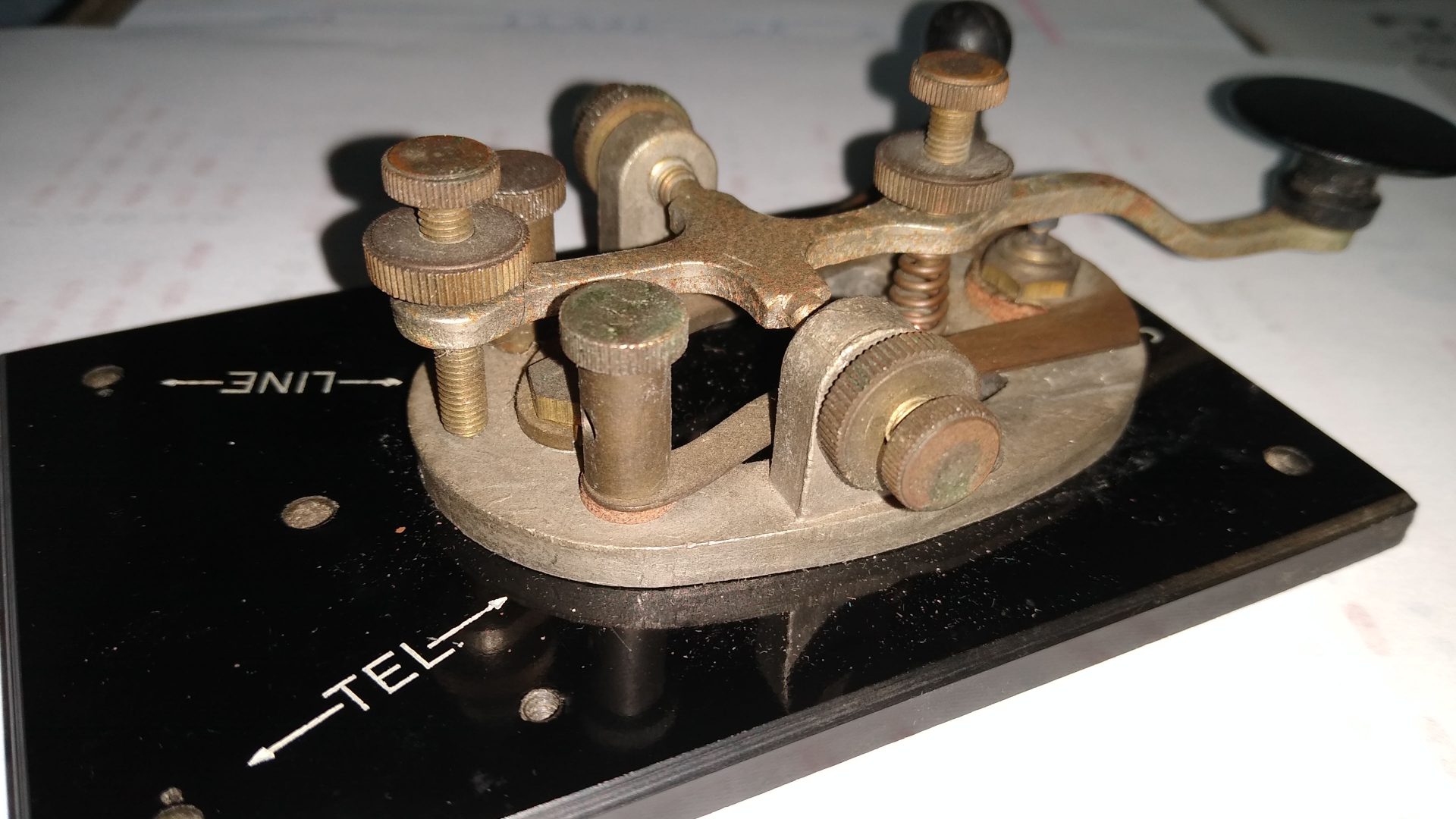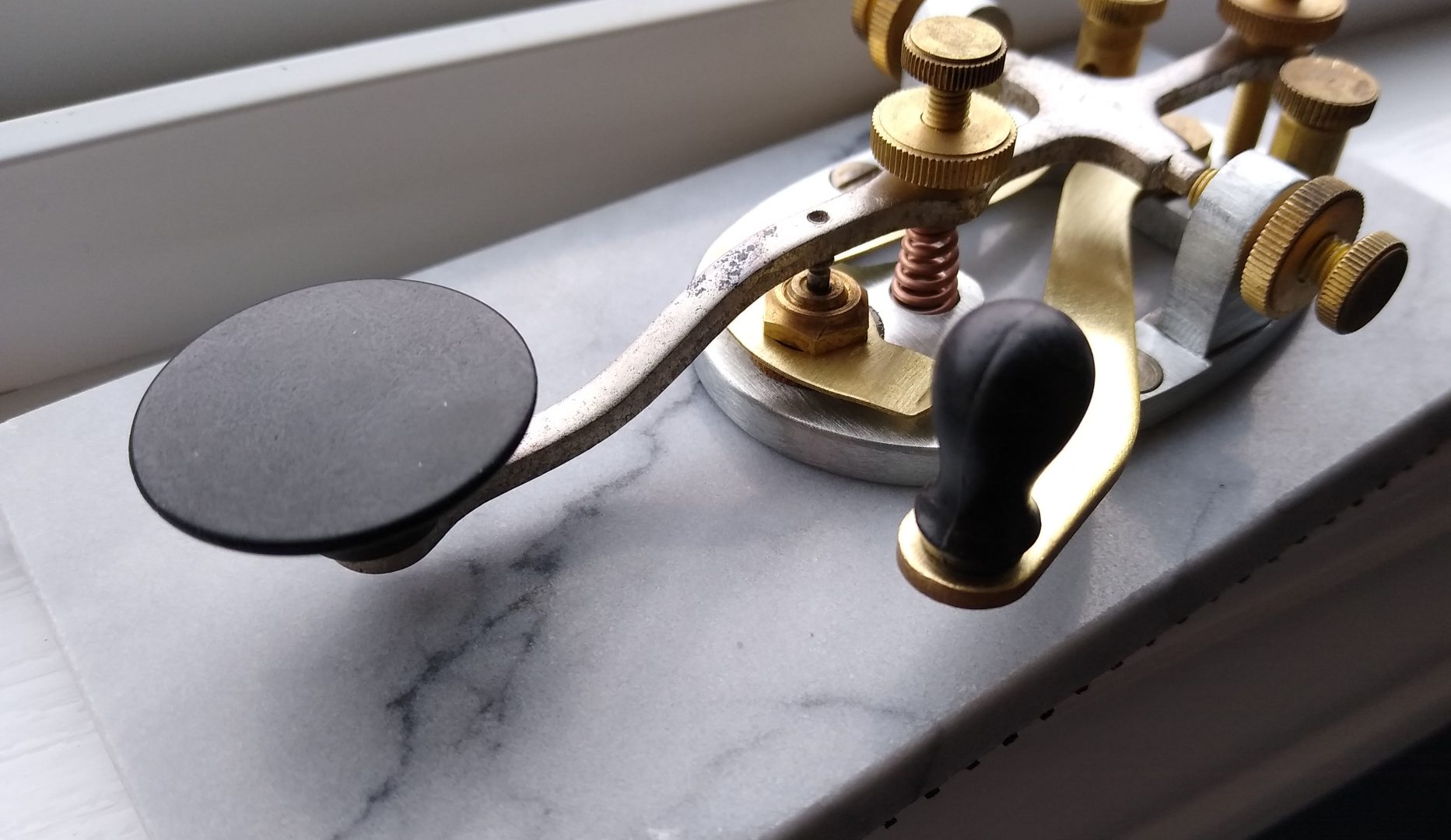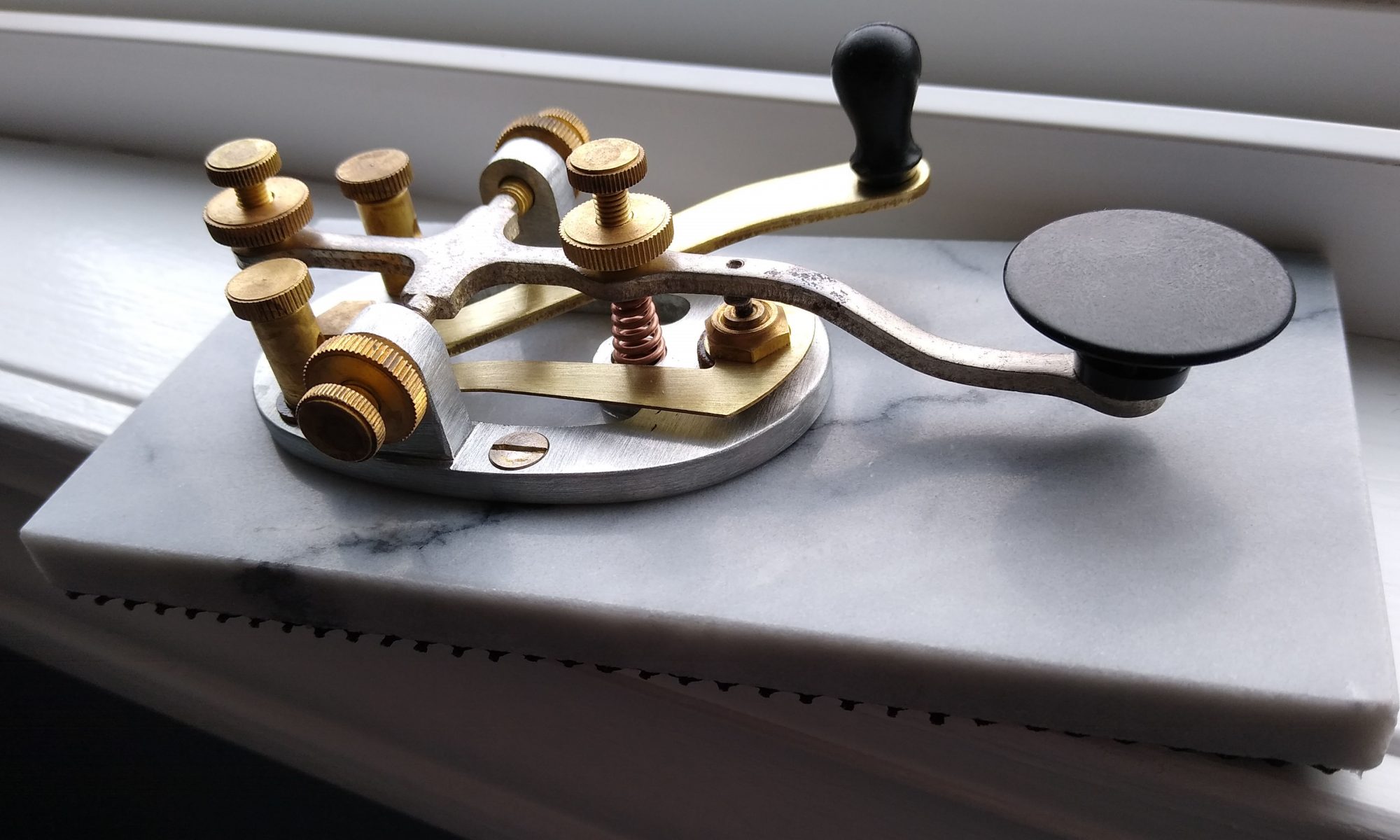I wouldn’t say that Morse code, or CW for short, has much practical use these days. As a communication method it is slow, very difficult to learn, the newer digital modes have matched or even surpassed its ability get through in difficult propagation conditions.
Still, just because an activity isn’t practical it does not mean that it isn’t fun. Morse code has seemed like fun ever since I got started in amateur radio. With a desire to start learning “the code” I decided to pick up a J-38 key to practice with. These keys are available at very reasonable prices, although their condition is usually a bit rough.
J-38 what?
The J-38 key is actually an old military design dating from as far back as WWII. (KD2UJ’s website has more detailed information.) Over time Morse code was phased out in the military and thousands of these keys ended up on the market as surplus items.

A collector grade key in original condition can fetch a high price, but most are in pretty rough shape and can be picked up cheaply. The image above shows the one I picked up on eBay. You can see that it wasn’t in the best of shape.

One thing I was worried about was whether any of the parts were corroded enough that the threads seized. The small threads on these things don’t stand up to much torque. I was lucky though – everything still rotated as designed.
Restoration
Step one was to get everything apart for cleaning. Since I had never disassembled one of these before I took my time and made sure that everything came apart intact. The tricky part was how to clean all the delicate parts without destroying them. Small threads do not stand up to wire brushes well – especially when the threads are soft brass.
Wouldn’t you know it, being a rifle owner came in handy. Once I got the key disassembled I used bore cleaner to get all of the brass parts cleaned. Bore cleaners are ammonia-based compounds that is used to dissolve copper deposits from rifle barrels. As a copper-zinc alloy, brass parts also clean up well with a copper remover.

Just be careful that you don’t soak the parts too long, or else you may find that they have “disappeared” in the solution.
Unlike the other parts, the base was actually aluminum. It required some more work to clean up, and in the end I decided to just file the whole surface to leave a uniform, smooth finish. The file cut through the grit on the surface as well as removed the original casting marks.
Finishing touches
As a final modification I replaced the original bakelite base with a new one made from a stone tile. I believe this type of tile is for a backsplash; in any case it was a perfect fit for the key and was heavy enough to keep the key from moving around in use. (The original design was intended to be fixed to the table, or held to the operator’s knee with a strap.)
To secure the key to the stone I drilled the tile with a masonry bit in the location of the original mounting screws. The screws rest freely in the holes without the threads touching anything. I then applied tap over the bottom of each hole and dabbed in some two-part epoxy.
Lastly, I placed the key in position on the on the base with the screws immersed in the epoxy. Tape on top of the screws kept them “down” flush with the top of the base. Tape on the key held it flat to the stone. Once the epoxy cured I was left with a simple, solid attachment.

A small pad of drawer-liner material glued to the bottom of the tile provides a soft, non-slip surface to keep they key in place on the desk. Some rubber cement did a good job of holding the pad to the back side of the tile.

The reborn key came out great. I used some speaker wire and a mono connector to create the cable to the radio, and have been using it for practice since. It is a little heavy for field use (and rather delicate as well), but as a base station key I couldn’t ask for more. Now I just need to finish learning CW . . . .
Helpful links:
Updated 2022-05-14

